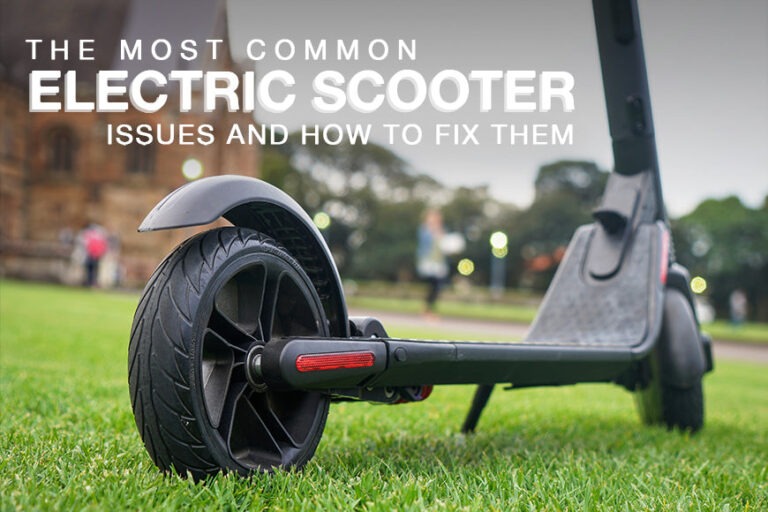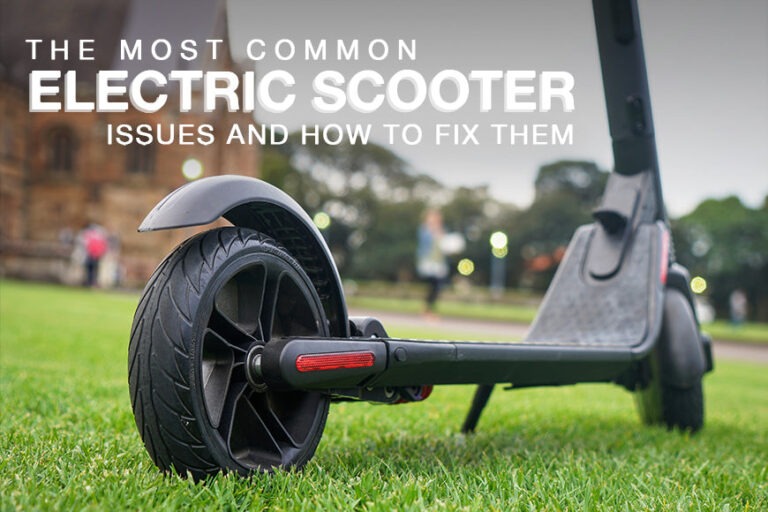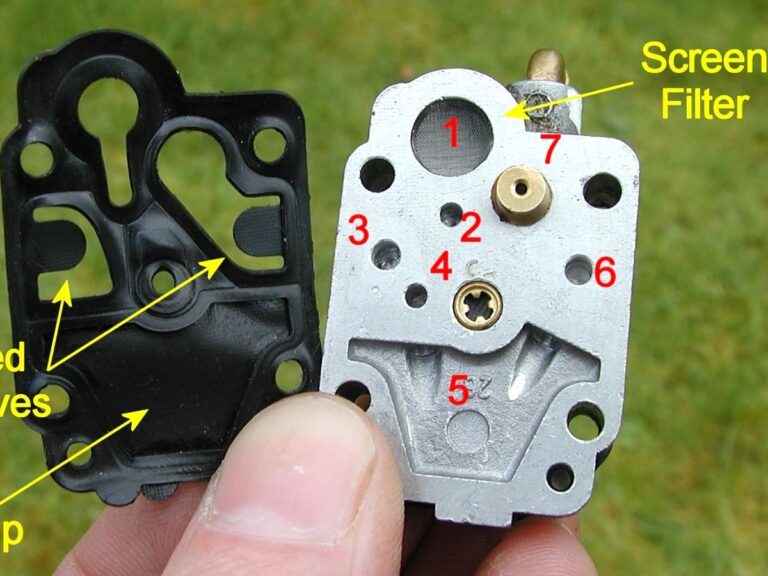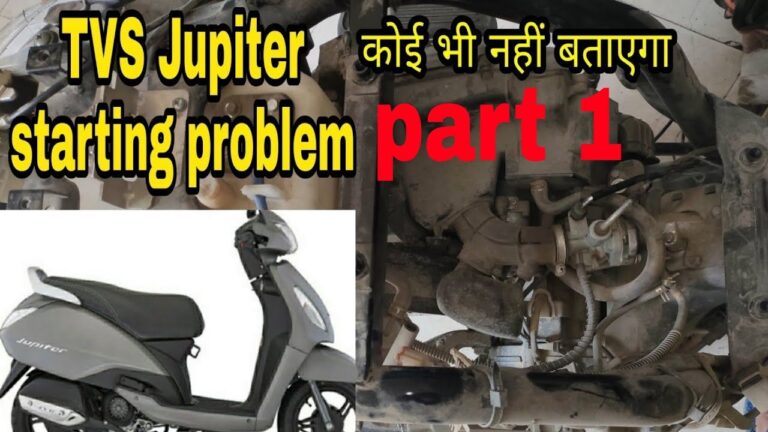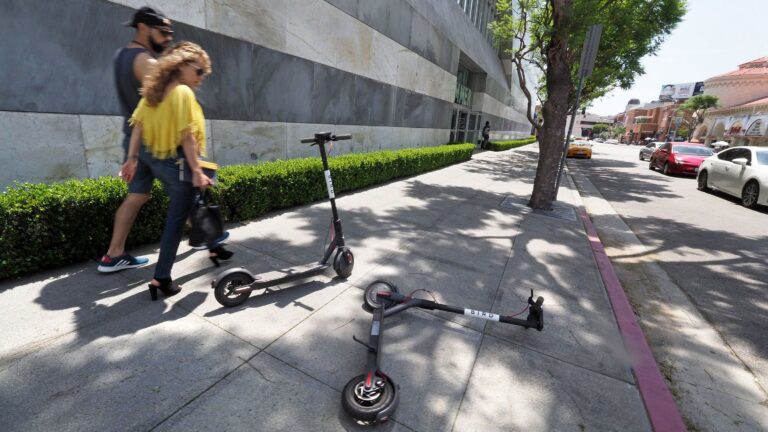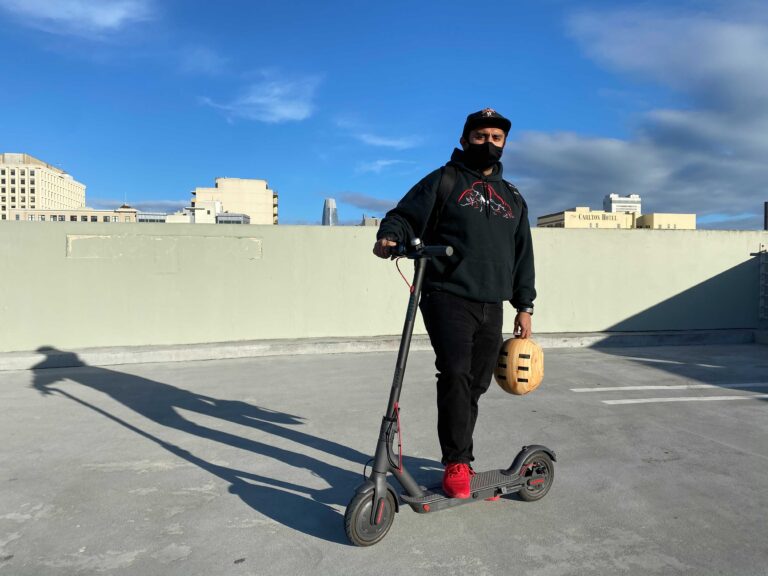Mobility Scooter Not Moving: Troubleshooting Tips for a Silent Ride

If your mobility scooter is not moving, there may be a problem with the battery or the motor. Checking and troubleshooting these components is essential to identify and fix the issue.
Why Is Your Mobility Scooter Not Moving?
Having trouble with your mobility scooter not moving? There could be several reasons why it’s not functioning properly, such as a dead battery, motor issues, or a faulty throttle. Consult with a professional to diagnose and fix the problem.
Is your mobility scooter not moving? Before you panic, it’s essential to understand the possible reasons behind this issue. Here are a few common causes that may be responsible for your scooter’s lack of mobility:
Battery Issues:
- Dead battery: If your mobility scooter is not moving, one of the first things to check is the battery. A dead battery is often the culprit for a scooter’s immobility. Ensure that the battery is charged and has enough power to run the scooter.
- Loose or disconnected battery cables: Loose or disconnected battery cables can also prevent your mobility scooter from moving. Make sure the cables are securely connected to the battery terminals.
- Faulty battery charger: If your mobility scooter’s battery charger is faulty, it may not properly charge the battery, leading to a lack of power. Consider using a different charger or getting your charger inspected by a professional.
Motor Problems:
- Overheating motor: An overheating motor can cause your mobility scooter to stop moving. Check if the motor is overheating by feeling it carefully. If it feels excessively hot, it might need to cool down before it can function correctly.
- Malfunctioning motor controller: The motor controller is responsible for controlling the speed and direction of the mobility scooter. If it malfunctions, it can prevent the scooter from moving. Consult a technician to examine and repair the motor controller if necessary.
- Motor brushes worn out: The motor brushes play a crucial role in conducting electricity to the motor. If the brushes become worn out over time, they may impede the mobility scooter’s movement. Replacing the worn-out brushes can often resolve this issue.
Remember, if you encounter any persistent issues with your mobility scooter, it’s always best to seek professional assistance. They can provide expert advice and resolve any underlying problems affecting your scooter’s mobility.

Credit: www.amazon.com
Troubleshooting Steps For Battery Issues
Experiencing issues with your mobility scooter not moving? Follow these troubleshooting steps to address battery problems and get your scooter back on track.
If your mobility scooter is experiencing battery-related problems and not moving as it should, there are several troubleshooting steps you can take to identify and resolve the issue. Below are some recommended actions to help you diagnose and potentially fix battery problems.
Checking The Battery:
- Ensure the scooter’s power switch is turned on.
- Verify that the battery connections are secure and tight.
- Inspect the battery terminals for any corrosion or buildup, which may hinder proper electrical connection.
- Check if the battery is properly seated in its compartment.
Voltage Testing:
- Use a voltmeter to measure the battery voltage.
- A fully charged battery should read approximately 12.8 to 13.2 volts for a 12-volt battery, or 25.6 to 26.4 volts for a 24-volt battery.
Inspecting For Leaks Or Damage:
- Examine the battery casing for any signs of leaks or damage.
- Leaks, cracks, or bulges could indicate a faulty battery that needs replacement.
Reconnecting Battery Cables Properly:
- Disconnect and reconnect the battery cables, ensuring they are securely and correctly attached.
- Check for any loose or frayed wires that may impede the flow of electricity.
Charging The Battery Correctly:
- Ensure the battery is properly connected to the charger.
- Follow the manufacturer’s instructions for charging the battery.
- Avoid overcharging the battery, as this can damage its longevity.
Using The Right Charger:
- Confirm that you are using the correct charger specifically designed for your scooter’s battery.
- Different scooter models may require different charger specifications.
Overcoming Charging Issues:
- If the battery does not charge, try cleaning the battery terminals and charger connections.
- If the battery is old or has reached its lifespan, consider replacing it with a new one.
- Seek professional assistance if you are unable to resolve the charging issue on your own.
By following these troubleshooting steps, you can address battery-related problems with your mobility scooter and hopefully restore its movement. Remember to always prioritize safety and consult a professional if needed. Happy scooting!
Fixing Motor Problems
Is your mobility scooter not moving? Don’t worry, we’ve got you covered. Our expert team can help you diagnose and fix any motor problems, ensuring you’re back on the move in no time. Trust us for reliable solutions to keep you mobile.
If you’re experiencing issues with your mobility scooter not moving, the problem could be related to the motor. In this section, we will explore common motor problems and how to resolve them.
Identifying Motor Overheating Causes:
Motor overheating can cause your mobility scooter to stop working. Here are some potential causes of motor overheating:
- Ambient temperature: High temperatures in the surrounding environment can lead to motor overheating. Ensure that you are using your mobility scooter in suitable weather conditions to prevent this issue.
- Excessive weight load: Carrying a load that exceeds the recommended weight limit of your mobility scooter can put strain on the motor and cause overheating. Make sure to adhere to the weight capacity guidelines.
Resolving Motor Controller Issues:
The motor controller is a crucial component that manages the operation of the motor. If you encounter problems with the motor, it’s essential to examine the motor controller. Here are some steps to diagnose and fix motor controller issues:
- Checking for error codes: Many mobility scooters are equipped with error code systems. Consult your user manual to identify any error codes displayed on the control panel. This can help pinpoint specific issues related to the motor controller.
- Resetting the motor controller: Sometimes, a simple reset of the motor controller can resolve minor issues. Follow the instructions provided in your user manual to perform a reset. This action can clear any temporary glitches and restore normal motor function.
- Replacing motor brushes: Over time, motor brushes can wear out, leading to motor performance problems. Check the condition of the motor brushes and replace them if necessary. Refer to the user manual for instructions on how to replace the motor brushes specific to your mobility scooter model.
Remember to refer to your mobility scooter’s user manual for model-specific troubleshooting steps and safety instructions. By following these guidelines, you can address motor problems and get your scooter back up and running smoothly.
Other Common Causes Of Mobility Scooter Issues
A Mobility Scooter Not Moving can be caused by various factors, such as a dead battery, motor issues, or a faulty controller. It is important to diagnose and address these common causes to ensure the smooth functioning of the scooter.
Mobility Scooter Not Moving
If you find that your mobility scooter is not moving, there could be several reasons behind this issue. In this section, we will explore some common causes of mobility scooter problems and how you can address them effectively.
Faulty Brake Release Lever
- The brake release lever might be faulty, preventing the scooter from moving.
- Inspect the brake release lever for any signs of damage or malfunction.
- If you notice any issues, consider replacing or repairing the brake release lever.
- Make sure the lever is properly engaged before attempting to move the scooter.
Stuck Freewheel Mode
- The freewheel mode may be stuck, causing the scooter to stay still.
- Inspect the freewheel lever or switch to ensure it is in the correct position.
- If it is stuck, try gently moving the lever back and forth to release it.
- Once the freewheel mode is disengaged, try moving the scooter again.
Damaged Or Worn Out Tires
- Damaged or worn out tires can hinder the mobility of a scooter.
- Check the tires for any punctures, cracks, or excessive wear.
- If you notice any issues, replace the tires promptly.
- Ensure that the tires are properly inflated and have sufficient tread for a smooth ride.
Remember, if your mobility scooter is not moving, it is important to diagnose and address the problem promptly. By inspecting and adjusting the brake release lever, releasing and engaging the freewheel mode, and checking the tires for damage, you can troubleshoot common issues and get your mobility scooter moving again.
Safety Precautions And Maintenance Tips
Looking to troubleshoot a mobility scooter that is not moving? Ensure your safety by following these maintenance tips to identify and fix the issue, allowing you to regain your independence and mobility.
Regular inspection and cleaning:
- Conduct regular inspections of your mobility scooter to ensure it is in good working condition.
- Check for any loose or damaged parts, such as bolts, screws, or cables.
- Inspect the tires for wear and tear, and ensure they are properly inflated.
- Clean the scooter regularly by wiping it down with a damp cloth and mild detergent.
- Pay special attention to the control panel, removing any dirt or debris that may interfere with its functioning.
Proper storage and handling of the scooter:
- When not in use, store the mobility scooter in a cool and dry place to protect it from excessive heat or moisture.
- Avoid leaving the scooter outdoors for extended periods, as exposure to the elements can cause damage.
- Use a cover to protect the scooter from dust and dirt when storing it.
- Take care when handling the scooter to prevent accidental damage, such as bumps or scratches.
Routine maintenance tasks:
- Follow the manufacturer’s guidelines for routine maintenance tasks, such as battery charging and replacement.
- Keep the battery charged at all times, as low power can affect the performance of the scooter.
- Regularly check and clean the battery terminals to ensure a good connection.
- Inspect the brakes to ensure they are working properly and adjust as necessary.
- Check the headlights, taillights, and turn signals to ensure they are functioning correctly.
Tightening bolts and screws:
- Regularly inspect all bolts and screws on the mobility scooter.
- Use appropriate tools to tighten any loose fasteners.
- Pay close attention to the seat, handlebars, and control panel, as these areas may experience more frequent loosening.
Lubricating moving parts:
- Apply lubricant to moving parts, such as the wheels, throttle, and brake cables, to ensure smooth operation.
- Use a suitable lubricant recommended by the manufacturer.
- Avoid over-lubricating, as excess lubricant can attract dirt and dust.
By following these safety precautions and maintenance tips, you can ensure that your mobility scooter remains in good working condition, providing you with the freedom and independence you deserve. Regular inspections, proper storage, routine maintenance, and lubrication will help extend the lifespan of your scooter and enhance your overall riding experience.
When To Seek Professional Help?
If your mobility scooter is not moving, it may be time to seek professional help. Don’t delay in getting assistance to diagnose and fix the issue to ensure your scooter is back up and running smoothly.
If you find yourself in a situation where your mobility scooter is not moving, it can be frustrating and inconvenient. While some issues can be easily resolved on your own, there are certain situations that may require the expertise of a professional.
Here are some scenarios where seeking professional help is necessary:
Complex Electrical Problems:
- If you have checked all the basic connections and components, and the scooter still does not move, it could indicate a complex electrical problem.
- An expert technician can diagnose the issue and perform advanced troubleshooting to identify any underlying electrical faults.
- They have the necessary tools and knowledge to fix complex wiring problems and ensure your mobility scooter operates smoothly again.
Motor Or Battery Replacement:
- If your scooter’s motor or battery is not functioning correctly, it may need to be replaced.
- A professional can assess the condition of these vital components and determine if a replacement is necessary.
- They can source the appropriate motor or battery type for your specific scooter model and install it correctly, ensuring your scooter regains its mobility.
Manufacturer Warranty Coverage:
- Before attempting any repairs yourself, it’s essential to check if your mobility scooter is still under warranty.
- Many manufacturers offer warranty coverage that can save you money on repairs.
- A professional technician can help you understand the terms and conditions of your warranty and guide you through the warranty claim process, if applicable.
Remember, while some issues can be resolved independently, tackling more complex problems without the proper knowledge and experience may cause further damage to your mobility scooter. Seeking professional assistance when necessary not only ensures safety but also helps maintain the longevity and performance of your scooter.
Frequently Asked Questions Of Mobility Scooter Not Moving
Why Does My Mobility Scooter Not Move?
There are several potential reasons why your mobility scooter may not move, such as low battery power, faulty connections, or a malfunctioning motor or controller.
Why Does My Electric Scooter Turn On But Not Move?
Your electric scooter may not move even when turned on due to issues with the motor, battery, or throttle.
Is There A Reset Button On A Mobility Scooter?
Yes, there is a reset button on a mobility scooter. It can help resolve certain issues with the scooter’s functionality.
Why Is My Mobility Scooter Beeping But Not Moving?
Your mobility scooter may beep but not move due to a low battery or a motor issue. Check the battery level and contact your manufacturer or technician for assistance.
Conclusion
If you find that your mobility scooter is not moving, there are several potential issues that could be causing the problem. First, check the battery and ensure it is fully charged. If the battery is fine, examine the throttle to ensure it is properly engaged.
Also, inspect the motor and drive mechanism for any signs of damage or malfunction. If everything appears to be in working order, consider consulting a technician or the manufacturer for further assistance. Regular maintenance and proper care are essential to keep your mobility scooter running smoothly.
Remember, troubleshooting and diagnosing the problem correctly is crucial to addressing the issue effectively. By following these steps and seeking professional help when needed, you can ensure that your mobility scooter keeps you moving safely and reliably for years to come.

